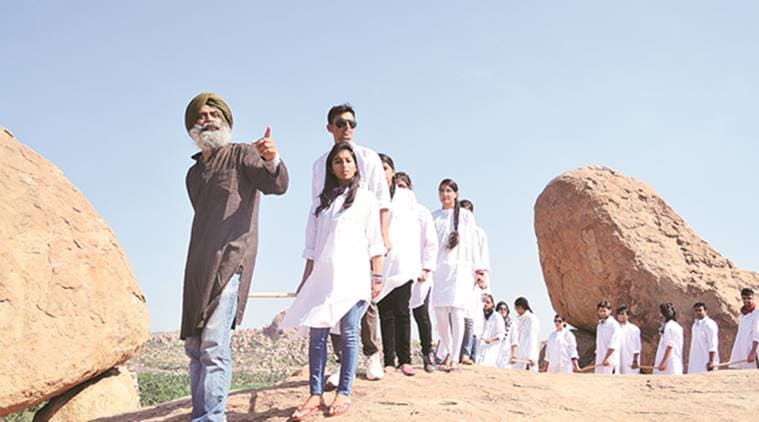 Apart from performances and exhibits, the Biennale will have panel discussions, video screenings, and informal interactions, as well as sessions on poetry and dance, with no one theme guiding the Biennale.
Apart from performances and exhibits, the Biennale will have panel discussions, video screenings, and informal interactions, as well as sessions on poetry and dance, with no one theme guiding the Biennale.
FOR an entire month, Healing Hill Art Space, an art residency in the idyllic Morni Hills near Chandigarh, will pulsate with varied sounds and sights, as 50 performance artists from across India and around the world will come together for the second edition of the Morni Hills Performance Art Biennale (MHPAB).
The effort and enterprise of painter and performance artist Harpreet Singh, the larger premise of the second MHPAB is to bring alternative arts from the world closer to students and audiences.
“Performance art is spontaneous and deep conceptual form of expression, of which the audience is an integral part. The idea of the Biennale is to blur boundaries, think differently and get the audience from various walks of life to weave stories and be part of the creative process. Our effort is to involve art students in various aspects of the Biennale,” explains Harpreet, who is one of the five curators.
Apart from performances and exhibits, the Biennale will have panel discussions, video screenings, and informal interactions, as well as sessions on poetry and dance, with no one theme guiding the Biennale. “We didn’t want to tie anyone down. So the artists have the freedom of devise and showcase their art in the residency, as well as different venues in Chandigarh,” adds Harpreet, who is inviting students to volunteer and in the process gaining valuable insights from
the artists.
In the days running up to the MHPAB, this week onwards, the residency will host three workshops by Delhi-based performance artist Inder Salim, Hungarian artist Rokko Juhazs and German performance artist Dagmar I Glausnitzer-Smith.
Open to the public and students, the artists, as part of the workshops will talk about performance art as a medium of expression, its various dimensions, their own work, philosophy, style and subjects and also curate performances.
Born in Kashmir and now based in Delhi, Salim is a performance artist and poet, who also uses photography and filmmaking to initiate dialogues.
Art, believes Salim, is a life force and nothing is outside any force, be it inner or outer. According to him, an artist’s leap of faith enables the being to traverse like cosmic neutrinos, through all transcendental layers, with a given empirical trace always. Like a true lover, says Salim, an artist invests ‘time’ in a concept, which is the present, and the movement in time itself. The body, he adds, must be an echo in which all languages collapse and refresh for a meaning and abstraction at the same time.
Rokko Juhász, who lives and works in Hungary, is an intermediary oriented performer, poet, and organizer. He has realized hundreds of performances and published six books of experimental poetry. With 33 years of practice as a performance artist, poet, and organizer, Juhasz has participated in most of the important performance art events worldwide since 1988 and focuses on performance art in public spaces.
‘Flying Chair-Bodies on the Hill’, is a performance art workshop facilitated by Dagmar I Glausnitzer-Smith, and the idea is to understand performance art in a practical, critical and observational context. One of the objectives of the workshop is to understand the fragility of the body, initially exploring and extending limitations with intuitive and observational skills. The workshop, with practical exercises, observations, and group discussions, strives to be a platform of exchange and cross-fertilization, and collaborations between people and artists from all creative fields.